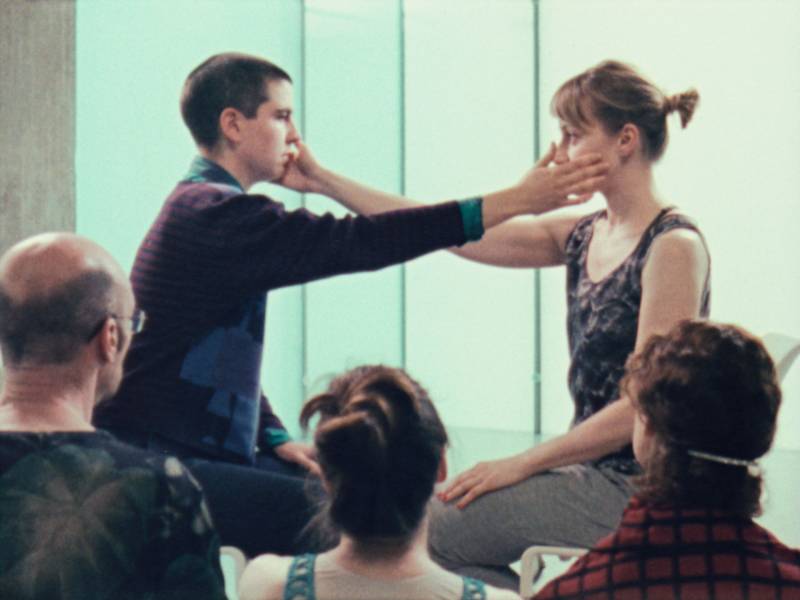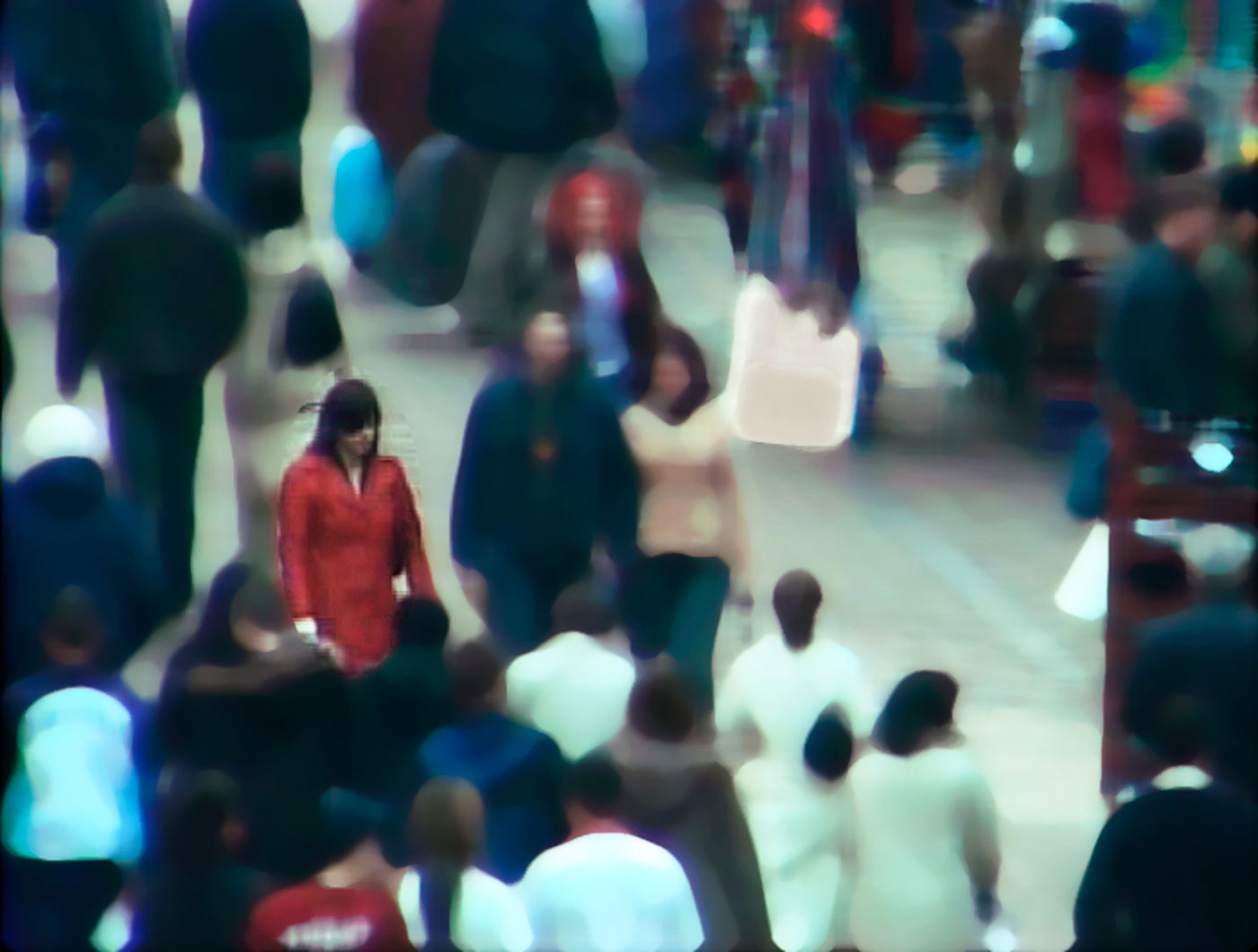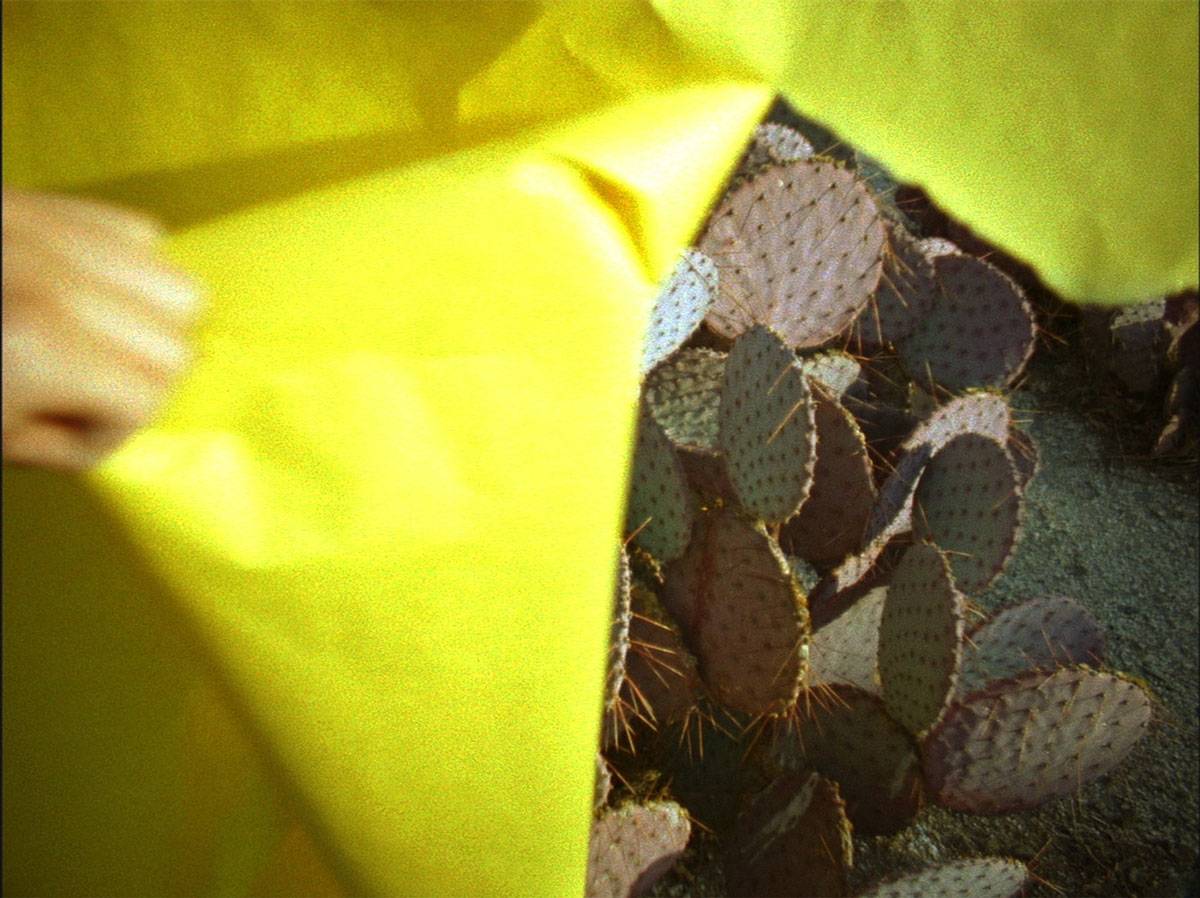An unfortunate assumption that’s often made by those outside the disability community is that senses are in some way a zero-sum game; that when a person loses hearing or sight, the other senses are somehow amplified to take the place of what is lost. But Hearing Aids, a two-part video program at McEvoy Foundation for the Arts, makes a better, more interesting proposition: that we are all gaining and losing access to our senses all the time. Sensory abilities are not just contained within an individual body but exist within our social relationships, with institutions and with the world at large. Program curator Alison O’Daniel’s beautiful introductory text makes this point vividly by calling our attention to the loss of taste and smell brought on by a COVID-19 infection, as well as the more transient loss of all five senses that can be brought on by sustained isolation.
Videos in ‘Hearing Aids’ Open Door to a Wider Understanding of the Senses

Like many people who live alone, I spent the past let’s-not-to-think-about-how-long-it’s-been pretty isolated from the world. Happily, my body’s ability to sense has been unaffected by the pandemic, but its opportunities to sense have been severely impacted—and it’s become extremely rare for me to use all five of my senses at the same time. The pandemic has put each of us in a portable sensory deprivation chamber, and while that was extremely noticeable last spring, I’ve now adjusted to the point that it’s something I rarely notice anymore.

In that frame of mind, I was well-primed to experience the videos in Hearing Aids. Both times I visited the McEvoy screening room, I entered in the middle of Daria Martin’s Theatre of the Tender (2016), which is described the program notes as “reveal[ing] two individuals navigating solitude, one in the mountains and the other in a city’s underground.”
It was easy to feel a kinship with the solitary figure wandering a mountainscape with audio recording equipment—you can catch me at Oakland’s Middle Harbor park, filling the cloud up with digital video any day of the week. But the film also explores mirror-touch synesthesia, a neurological condition in which witnessing a touch creates the sensation of the touch within the viewer. (I was also reminded of the “hyperempathy,” or the ability to share the sensations of others, common to characters in Octavia Butler’s Parable of the Sower.) In Theatre of the Tender, there is an attention to attention that opens the door wide for empathy in the viewer; watching someone watching, it’s impossible not to mirror that gaze back at yourself.
Some of the other work on display deals with sensory perception more directly. In Jill Magid’s Trust | Evidence Locker (2004), the artist closes her eyes and walks through a busy section of Liverpool, guided by someone on the other end of the city’s video surveillance system. The voiceover is undeniably charming despite being truly creepy. Laida Lertxundi’s Vivir para Vivir / Live to Live (2015) includes a sustained shot of a printed-out ECG, paired with audio of a heartbeat that turns into a song. I was reminded of pulsatile tinnitus, where a person might hear their heartbeat in their ears all the time, despite the tendency of the body to ignore that sound. (Or how we’re almost always seeing our own noses, but almost never noticing them.)

As someone who makes media accessible for a living, I’m drawn to work that explores the senses. My job is essentially to pretend that I can’t hear or see a media piece and to describe it verbally—which is a translation that’s impossible to ever do completely. And as someone who (currently) hears and sees, it’s incredibly difficult to know if you’re doing a good job. The work in Hearing Aids prompts the viewer to undergo an increased examination of their own sensory lives, highlighting all the little ways we ignore our senses—until we don’t. And crucially, the show includes a binder of large-format transcriptions to accompany each video piece. The absence of this extremely simple and low-tech accommodation in art settings always blows my mind. It’s so easy, arts presenters; please do this.
The pleasure in a screening series like Hearing Aids isn’t just the increased awareness of the sensory experiences available to us, though that’s certainly a part of it. More importantly, the work on view presents the viewer with an increased awareness of the hidden work their own bodies are doing: the filtering, prioritizing and stacking of sensory inputs. We tend to think that what our bodies tell us is true and in some way complete, and Hearing Aids finds beauty in the fragmentary and mutable nature of perception.

Session 1 of ‘Hearing Aids’ is on view at McEvoy Foundation for the Arts through Aug. 31. Session 2 is on view Sept. 1–Dec. 4. Details here.

